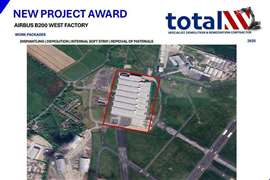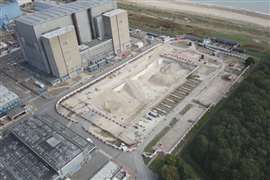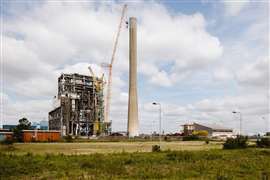Armoured excavator deployed for remediation works at World War II army munitions site
20 November 2023
A special armoured excavator has been deployed to carry out the remediation of what is believed to be the largest disposal site of chemical warfare agents in Europe.
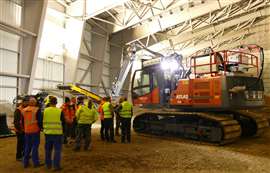 The armoured unit will excavate six tonnes of munitions, with the number of individual rounds potentially reaching intp the tens of thousands. (PHOTO: Atlas)
The armoured unit will excavate six tonnes of munitions, with the number of individual rounds potentially reaching intp the tens of thousands. (PHOTO: Atlas)
The adapted 225 LC tracked excavator was built by German construction equipment manufacturer Atlas, to carry out the removal of around six tonnes of old army minutions from what is known as the Dethlinger Pond near Munster in Germany.
The Dethlinger Pond, where from 1942 to 1952 the “German Armed Forces and later the British Army disposed of a huge number of grenades and chemical warefar agents, was essentially a pit in the ground that, when it was open during the 10-year period, measured 63 m wide and roughly 12 m deep.
“The pit was backfilled with soil and rubble in 1952,” said Atlas, adding that the past 70 years had seen the site suffer both rotting and groundwater contamination.
The design of Atlas’ armoured excavator was based on that of the company’s 225 LC crawler excavator. Originally 23-tonne machine with a 129 kW (175 hp) EU Stage 5 engine, the armoured unit was redesigned to meet NATO’s STANAG Level II safety standards.
With an operating weight of 29.5 t, it has been refitted with a standard diesel engine and a 130 kW electric motor, which have been situated in the recessed counterweight of the machine. The excavator’s cab has also been adapted, with a front windscreen comprised of 56-mm armoured glass and side windows fitted with 50-mm armoured glass.
The cab is further protected by 6mm of armoured steel installed at its base, and a door that weighs roughly 250 kg and that is operated electrically.
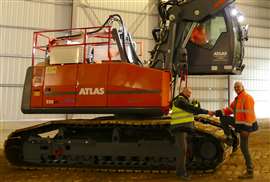 The armoured excavator is a redesigned version of the Atlas 225 LC model. (PHOTO: Atlas)
The armoured excavator is a redesigned version of the Atlas 225 LC model. (PHOTO: Atlas)
“The cab is completely sealed and features protective ventilation with three compressed air cylinders mounted on the roof,” said Atlas.
“The sensors for detecting the presence of poisonous gas are also located there. The protective ventilation is activated immediately in the event of an emergency thanks to a signal from the sensors. It is possible to make an emergency exit through the rear of the cab.”
The machine is currently working inside a specially constructed, self-supporting hall - measuring the size of two football fields with a ridge height of 20 m - that was built around the Dethlinger Pond to allow remediation works to be carried out safely.
Atlas, which was appointed to the project in consortium with a number of other companies including environmental engineer Prof. Burmeier Ingenieurgesellschaft, said: “The clean-up involves permanently extracting air from the hall and filtering it with activated carbon. That’s around 200,000 cu m per hour.
“The groundwater is also collected and purified. The large hall is totally sealed and can only be left through airlocks with subsequent decontamination. Other halls, for example for purifying the groundwater or sanitising personnel, have also been provided.”
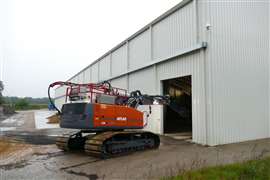 A self-supporting hall has been erected around the Dethlinger Pond for safety reasons. (PHOTO: Atlas)
A self-supporting hall has been erected around the Dethlinger Pond for safety reasons. (PHOTO: Atlas)
The remediation of the World War II site has also seen the erection of other necessary infrastructure, including roads to other hall structures, a groundwater purification plant, an air-lock system and a conveyor belt system to transport the excavated material.
The works being carried out by M&P and other project partners will see the entire contents of the Dethlinger Pond completely excavated and professionally disposed of. Munitions recovered from the site, which could number in the tens of thousands, will be incinerated at a temperature of 1,800 degrees at special facility in Munster.
Due to the dangerous nature of the materials, the works are expected to take five years to complete, with daily operations at the site requiring the presence of an emergency doctor and ambulance throughout the project duration.
“The employees of the clean-up team are only allowed to work in the pit using special equipment and for short periods of time,” said Atlas, adding that” he total cost of the clean-up is estimated at over €60 million (US$65.5 million)”.
CONNECT WITH THE TEAM







